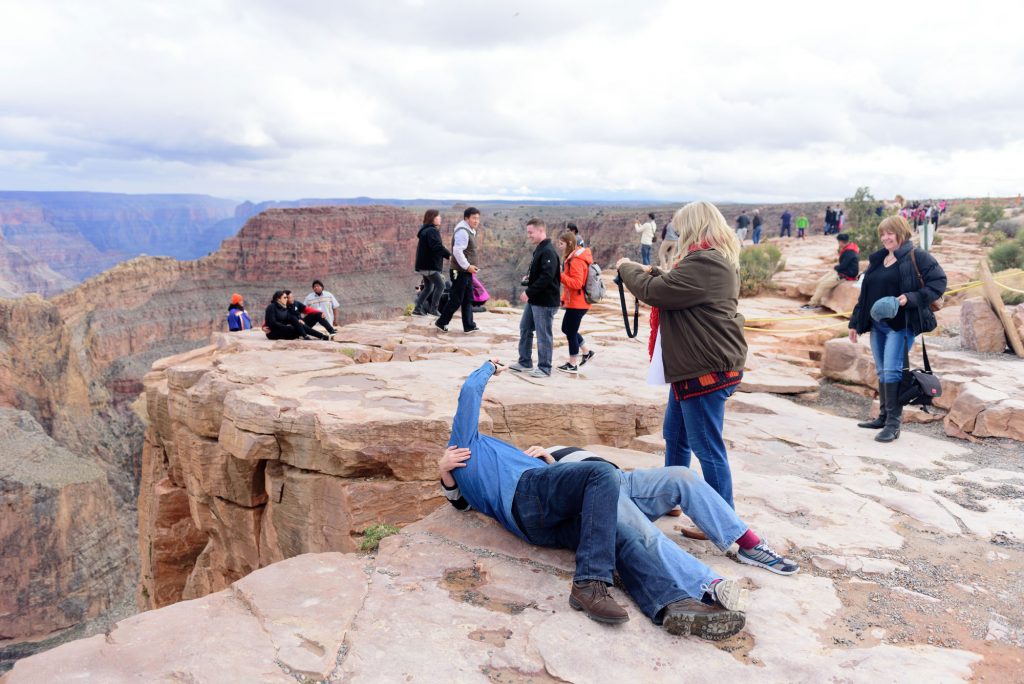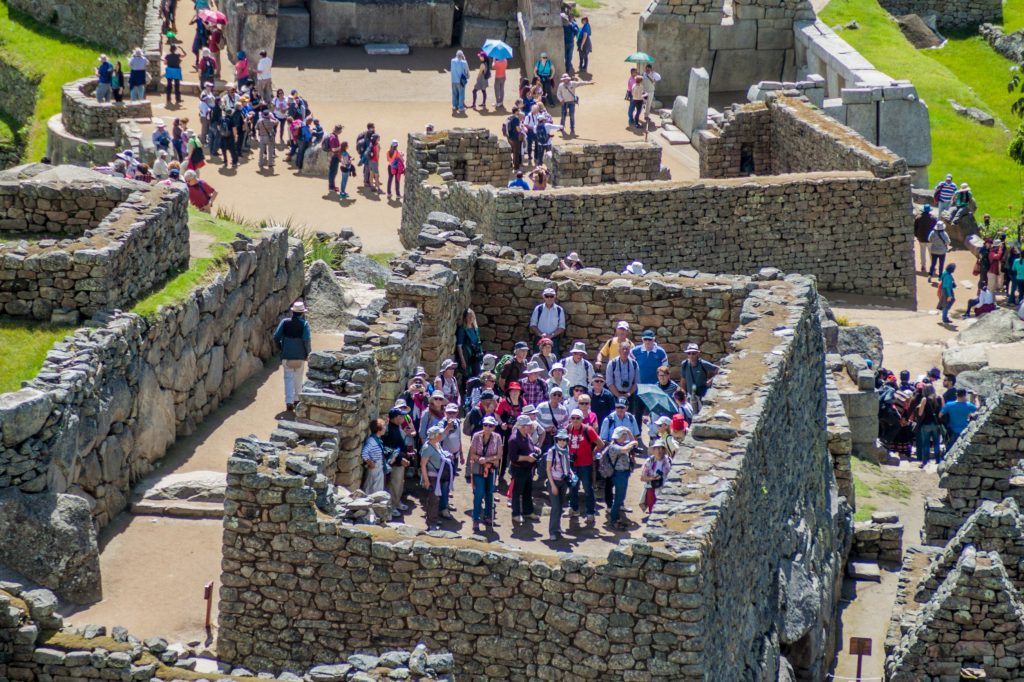September 27 is World Tourism Day and the ideal time to discuss overtourism, a challenge all sectors of the travel and tourism industry need to address. There are no easy answers in regard to this issue, and we invite and encourage you to continue this conversation in the comments section of this article.
This summer’s spate of anti-tourism protests in Venice, Barcelona, and other European cities has surfaced the long-simmering issue of overtourism. Citizens and locals blame unchecked tourism for overcrowding, rising rents, declining liveability, pollution, an influx of low-quality and mass-produced souvenirs at the cost of local craftsmanship as well as the destruction of the very characteristics that led to the popularity of these destinations in the first place. It’s a problem foreseen by journalist Elizabeth Becker in her 2013 book “Overbooked”: “Tourism is octopus-like, its tentacles reaching out to aspects of life that are as diverse as coastal development, child prostitution, the treatment of religious monuments, and the survival of a threatened species or native dancing.”

It’s a tough position for destination management organizations, which often pursue a short-term “heads in beds” strategy over long-term sustainable tourism practices for political expediency. “DMOs would be wise to direct travelers to less crowded, more authentic, and experientially rewarding parts of their destinations. But major hotels and attractions that help fund those DMOs may take a dim view of such advice,” said Jonathan B. Tourtellot, CEO of Destination Stewardship Center. Tour operators may want to sell a variety of trips but often feel stymied by travelers’ popular bucket list desires. “We often see people insisting on the ‘classic’ destinations such as Tuscany — even if they’re beginner cyclists and we tell them that Tuscany is very hilly,” said Maria Elena Price, co-founder of Experience Plus, a bike trip operator.
There’s no question that the right kind of tourism can contribute to the local economy and well-being of residents. But how can destinations, tour operators, travel agents, and others working in the industry convince travelers to deviate from the bucket-list icons?
Some foresighted destinations are taking steps to avoid or mitigate the problems that have befallen others. Norway, for example, has adjusted its marketing strategy. “This has become a very relevant issue in certain destinations in the fjords. While we do still market our iconic destinations, our marketing only promotes alternative times to visit, trying to encourage tourists to come outside of the high season,” said Kristian B. Jorgensen, CEO of Fjord Norway. “When it comes to high-season marketing, we only present new or lesser-known destinations, trying to spread traffic throughout the region and decrease high-season pressure on our most popular icons.”
In July, Peru began limiting the amount of time visitors can spend in the fragile ruins of Machu Picchu as well as beefing up infrastructure and promotion of less popular regions with unknown but equally rich touristic offerings. “Peru is a vast land with such varied offerings; we’re more than Machu Picchu,” said Sandra Doig, incoming deputy director of PROMPERU. “Much of the tourism now occurs in the south, around Cusco. We have been trying to raise awareness of the northern provinces, including Chachapoyas. Within this uncrowded highland landscape is the pre-Inca stone fortress of Kuelap, often called ‘the Machu Picchu of the North.’” PROMPERU has been offering press trips to the region and informational webinars to the trade to raise awareness and create buzz.

Tour operators may not be able to divert travelers hell-bent on visiting an icon like Machu Picchu, but here are some successful strategies operators have tried.
Utilize destination expertise to help travelers figure out what they really want.
“We always offer Argentina's popular destinations as an option, but our final recommendations ultimately depend on what type of experience each traveler is looking for,” said Rafa Mayer, founder of Say Hueque Argentina & Chile Journeys. “We work to build up the trust of the traveler and if we think someone would rather experience a more off-the-beaten-path alternative, we make that suggestion. For instance, we would suggest visiting the Camarones Penguin Reserve instead of crowded Punta Tombo in Puerto Madryn.
“We also try to diversify how our travelers see attractions. Rather than trekking Perito Moreno Glacier like everybody else, we’ll arrange a boat excursion from Patagonia’s Estancia Nibepo Aike to the Lenga Forest, where you can get a unique viewpoint of the glacier from a completely different perspective. While it may take a little longer to reach these alternatives, we always hear incredible feedback from our customers.”
Capitalize on the trend of travelers seeking a deeper experience.
“We actively steer travelers to less-visited places. For example, Capitol Reef National Park in Utah; it is the least known but is truly a gem,” said Mark Campbell, president of Revealed America. “Many of our guests are wanting deeper, more immersive experiences wherever they go. The primary way we are doing that is via private guided tours. Many of our guides are published authors, scientists, historians, and former park rangers. All are great storytellers and are passionately committed to environmental and cultural preservation.”
Come up with unique products in a lesser-known destination.
“We’re about to launch an innovative and sustainable product in Chile’s Colchagua Valley, a relatively unknown area,” said Juan Rodriguez, founder of South Expeditions. “The southmobile is a pedal- and electric-powered self-drive vehicle that will take visitors on tours through the valley. It’s a unique and eco-friendly way to experience this wine country. We recognize that it takes time for awareness of both the product and the region to build, so we’re focusing our early efforts on the trade and consumer media, as well as establishing regional cooperative partnerships.”
Cultivate a different kind of traveler.
“Travelers have always found us when they are looking to go beyond the typical tourist destinations and immerse themselves in a culture and the outdoors,” said Robin Brooks, marketing manager of Exodus Travels. “We have always encouraged travelers to take the route less traveled, seeing the world by foot or bike. In addition, our travelers only stay in small, family- or locally run properties that are away from major tourist attractions and cities.”
Use past clients and owned media to sell trips.
“Having a loyal following or group of clients who prioritize traveling with us has helped us introduce travelers to lesser-known places,” Price said. “Highlighting these other regions as much as possible (rather than the iconic destinations) in our communications has also helped. We find that lesser-known places often need to be on the traveler’s radar for one or two years before they start considering it.”
Develop sustainable ways to visit an icon.
“For a country like Peru, there are natural drivers such as Machu Picchu that one cannot ignore,” said Enrique Umbert, co-founder and manager of Mountain Lodges of Peru. “Machu Picchu is wonderful, despite its overcrowding. Let us not be afraid to present it in its true light. Our main offers present Machu Picchu as the organic icon that it is, but focus on unique, exclusive, or less-traveled ways to reach the icon.
“Every destination has unique values. In some it is a special person or a special family. In others it is an exotic animal, or the possibility of engaging in a unique activity. In most cases, these special values will present the potential for unique, spontaneous, and unforgettable experiences.”
Seek an indigenous perspective.
“In Argentina’s Iguazu Falls, we encourage people to visit the Guarani Reserve, instead of taking the standard helicopter tour,” said Rafa Meyer of Say Hueque. “An activity like this helps build more meaningful memories and can help improve the lives of local, native communities that otherwise wouldn’t have the tools or resources to connect with travelers. In our opinion, that’s worth a whole lot more than the aerial-view Instagram shot.”
In the end, alleviating overtourism requires a combined effort by government entities, the travel industry, and travel media, but much can be done to nudge travelers along. “Media and marketers should strike the term ‘must-see’ from their lexicons,” Tourtellot said. “Adventure travelers and operators can lead the way in shunning the kind of hit-and-run selfie-stick tourism that so overcrowds places.”
And, Jorgensen noted, “governments at the highest levels need to know about how to develop a sustainable destination from the very beginning, before a problem occurs. Planning for growth needs to be a condition for developing a destination.”
